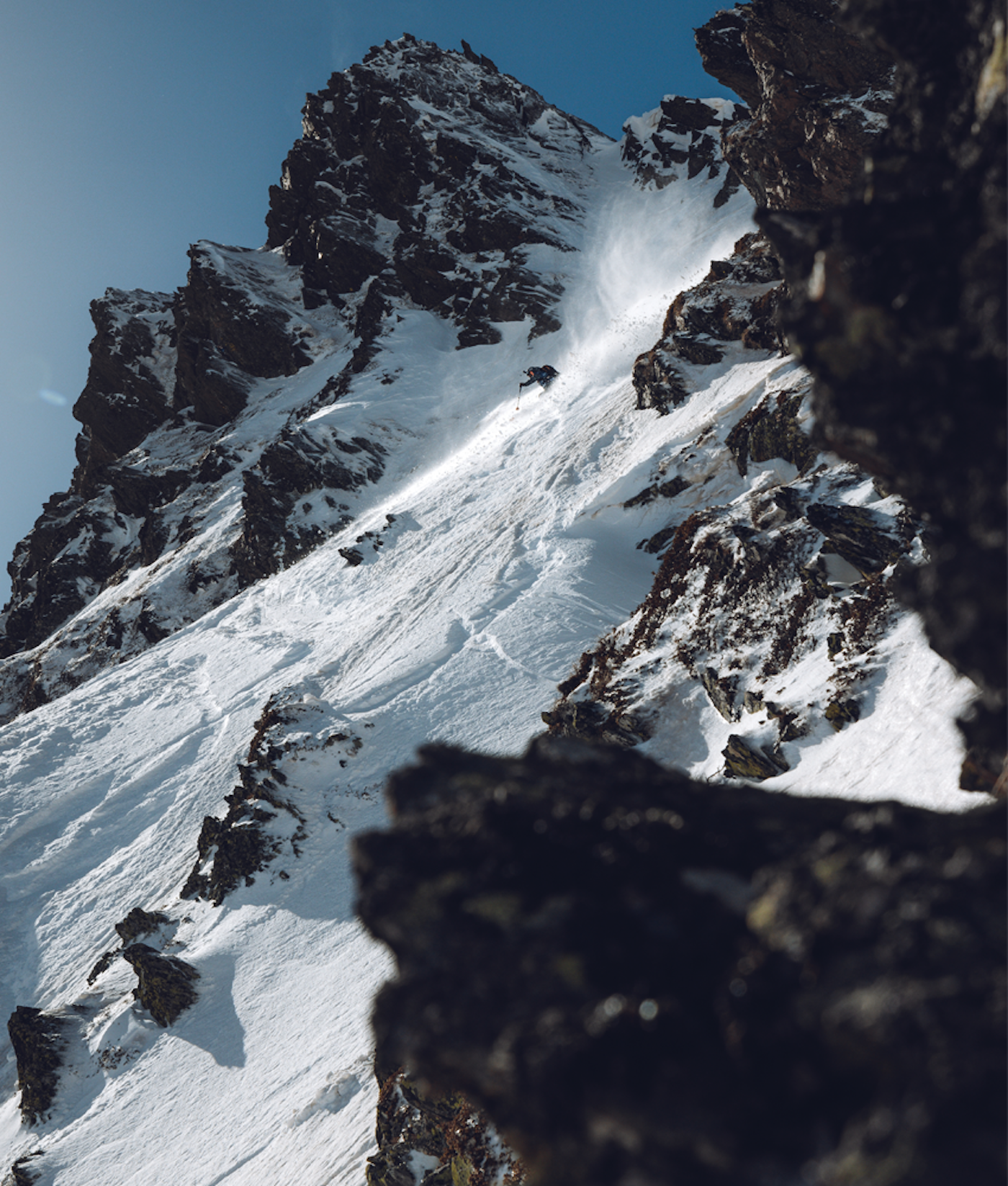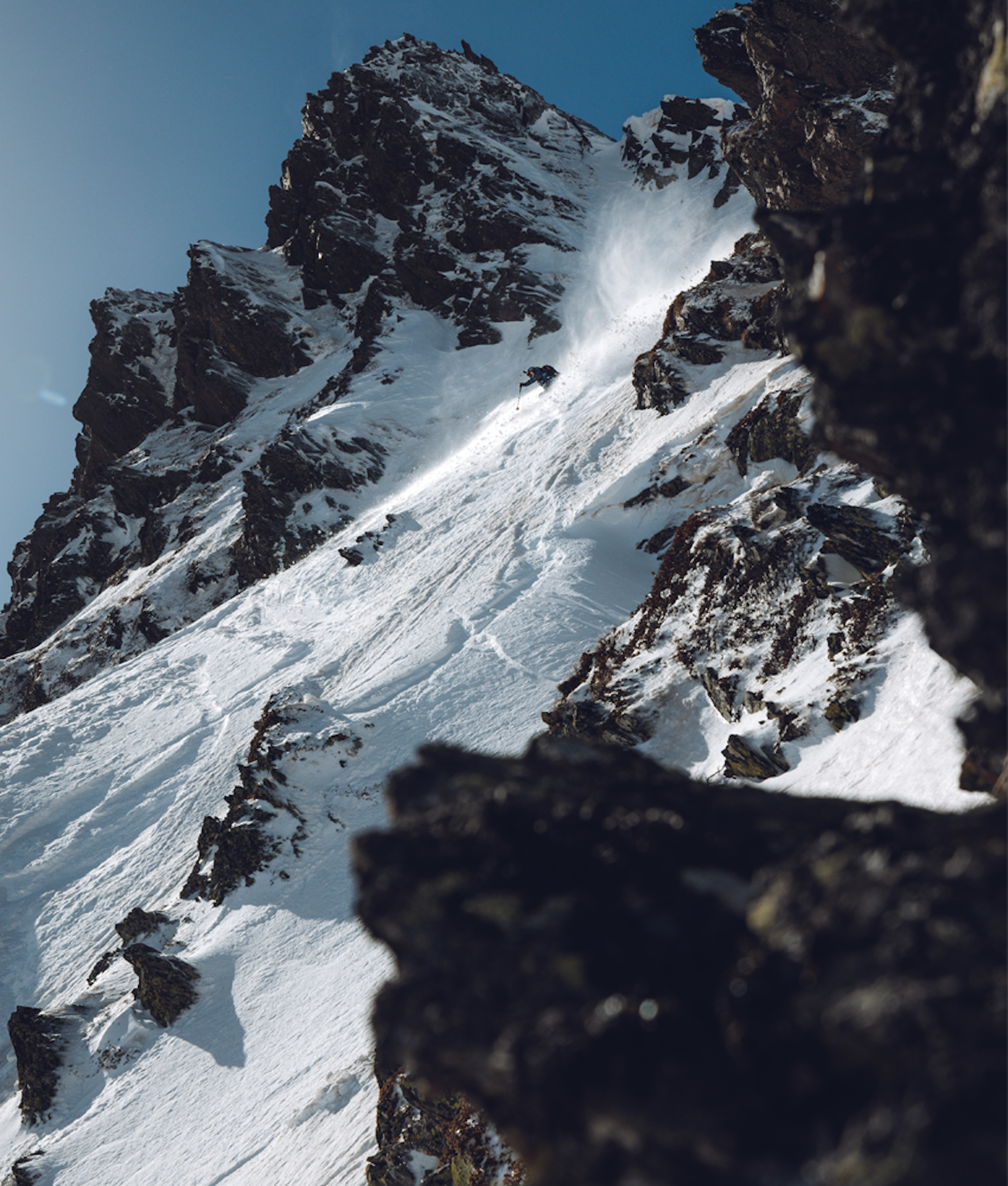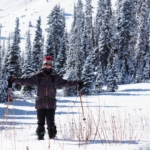INTERVIEW — Jordan Grant-Krenz
As a 22-year-old entering his second season on the Freeride World Tour, Whistler’s Cooper Bathgate has been tirelessly grinding to reach his current perch. A mainstay in FWT qualifying events since 2015, Cooper stormed onto the Tour last year with two solid opening stops but took a whirlwind spill on the treacherous Fieberbrunn course, ending his competition season one event shy of the finale in Verbier. Yet, despite these road blocks and a nagging ankle injury, Cooper continues to dedicate his mind and body to the craft that he loves. To the young guns out there looking to immerse themselves in the world of competitive freeride, the knowledge you seek lies before you. We had the pleasure of sitting down with Cooper and getting to know what goes through the head of one of Canada’s best, on and off the hill.
How did growing up in Whistler shape your approach to skiing and finding your flow in the mountains?
That’s a funky question because, when you look at my buddy Tom Peiffer, he also grew up skiing Whistler—but we ski totally opposite lines and have different styles. I prefer a lot of cross court, floaty features, and Tom is all about the fall line. Whistler has a lot of both, so it gives you the chance to grow into what you prefer and develop your own style. That’s probably one of the biggest advantages of growing up skiing there: the diversity of the terrain.
Which ski film had the biggest influence on you growing up? Why?
[MSP film’s] “Claim” was a big one. As a young kid watching that I was glued to Sean Pettit; he grew up in Whistler, which made it even cooler for me. I still try to incorporate some of his style into my own.
For a guy so devoted to skiing, how do you spend your time in the off-season?
I work at Comor, a local ski and bike shop in Whistler. With my job there I get to spend a lot of time on my bike, which I love. The bike park [at Whistler] is insane, and it’s been really cool being able to grow up with that. But this summer, and last summer as well, my Achilles has been messed up, so I’ve had to keep things pretty low key.
What has the recovery process been for that injury?
It certainly took a big toll on my skiing this year. I’m not one to make excuses, but I was hardly able to ski in between stops on the Tour because I needed a few days of rest after a hard day of skiing. I’ve been to several doctors and none of them could pinpoint the issue, so that has been frustrating. By the end of this summer, after using some self restraint and taking it mellow, I’ve been feeling almost back to normal.
You competed in Freeride World Qualifier events for a number of years before getting the call up to the Tour. What did it feel like to get that invitation?
It was wild, man. We were in Crested Butte right before Covid shut everything down, and [the contest organizers] told us it would probably be the last comp of the season. I had won my first comp, but bombed the next two, so I was thinking, “Okay, this won’t be the year.” But I ended up getting second at the Butte, which put me second overall. A few weeks later, while playing video games with the boys during lockdown, I got an email from the FWT and we were all fired up.
What’s the biggest difference between FWQ events and main events on the FWT?
In North America, for the qualifier events, it’s all on-course inspections—you get to side-slip down the face and stand on top of your take offs, so you end up knowing what you’re skiing really well. But, on the Tour, it’s only a visual inspection and you just look at the face from the bottom. The first time you ever ski [your line] is during your comp run, which is really trippy, and you have to trust that you know where you are on the face.
When you took a spill on your Fieberbrunn run, is that because it was misleading from the bottom?
Yeah, there was about five centimeters of snow above a layer of wind crust, so I punched through that top layer and wasn’t expecting the snow to give out. Things can definitely be misleading from down there. But, in my first two runs, and even at the third stop in Fieberbrunn, I skied what I wanted to ski and was happy with how I did, all things considered.
Walk me through the decision to drop into that couloir switch on your Andorra run…
They used that face for the first two events, so everyone knew which lines skied well, which take-offs were good, all that. I wanted to do something different that I knew nobody else was thinking , so I decided to go backwards into one of the steeper parts!


SKIER: Cooper Bathgate
PHOTO: Jeremy Bernard/FWT
LOCATION: Ordino Arcalis, AND
Which riders do you keep a close eye on for your own inspiration? Skiers or snowboarders, anything goes.
Sean Pettit for sure, but I also really like watching Parker White. It’s easy to see how much fun he’s having… and what a nice mullet that man’s got! It’s wild to see those guys tear it up on skis, or on the board. Lots of talent.
What do you see as the biggest strength that the world of skiing has going for it right now?
When I’m home in Whistler, since I work in a ski shop, I see a lot of people get into skiing that may have otherwise gone on vacation somewhere else. It’s always good to have new people finding passion in the sport and the community that skiing can bring, especially after being in lockdown. I’m not sure if skiing ever wants to be mainstream, but I feel like there are ways to keep it core while at the same time expanding and getting everyone involved. 1000 Skis is a great example because they’re rider owned, but seem to be trying to make a very inclusive product that any type of skier can use. I really like that idea, and admire the leap of faith that they’re taking to make the brand come to life.
On that note, what do you see as the biggest obstacle facing the ski community?
In a broad sense, global warming is an obvious one. The base of Whistler is only around 600 meters above sea level; if we see any more of a temperature increase, most of the Coastal Range will see a huge drop in snow. The ecological fallout would be disastrous for everything that lives there—so, yeah, it’s a threat for skiing, but it’s really a threat that spreads way farther. The impacts hit all of us. It’s a scary topic but I see it as something that should bring us together to fight it.
Last (and most important) question: Settlers of Catan or Cards Against Humanity?
[Laughs] My girlfriend got me into Settlers of Catan! I always feel like I’m winning and at the last second someone else comes in and takes it.
![[Q&A] Cooper Bathgate is one of the fastest rising stars on the Freeride World Tour, here's the scoop](https://www.datocms-assets.com/163516/1751488605-cooperbathgate_feat.png?auto=format&bg=FFFFFF&w=100)
![[Q&A] Cooper Bathgate is one of the fastest rising stars on the Freeride World Tour, here's the scoop](https://www.datocms-assets.com/163516/1751488605-cooperbathgate_feat.png?auto=format&bg=FFFFFF&w=1200)


![[GIVEAWAY] Win a Head-to-Toe Ski Setup from IFSA](https://www.datocms-assets.com/163516/1765920344-ifsa.jpg?w=200&h=200&fit=crop)


![[GIVEAWAY] Win a Legendary Ski Trip with Icelantic's Road to the Rocks](https://www.datocms-assets.com/163516/1765233064-r2r26_freeskier_leaderboard1.jpg?auto=format&w=400&h=300&fit=crop&crop=faces,entropy)




![[GIVEAWAY] Win a Head-to-Toe Ski Setup from IFSA](https://www.datocms-assets.com/163516/1765920344-ifsa.jpg?auto=format&w=400&h=300&fit=crop&crop=faces,entropy)


![[Q&A] Cooper Bathgate is one of the fastest rising stars on the Freeride World Tour, here's the scoop](https://www.datocms-assets.com/163516/1751488605-cooperbathgate_feat.png?auto=format&bg=FFFFFF&w=2000)